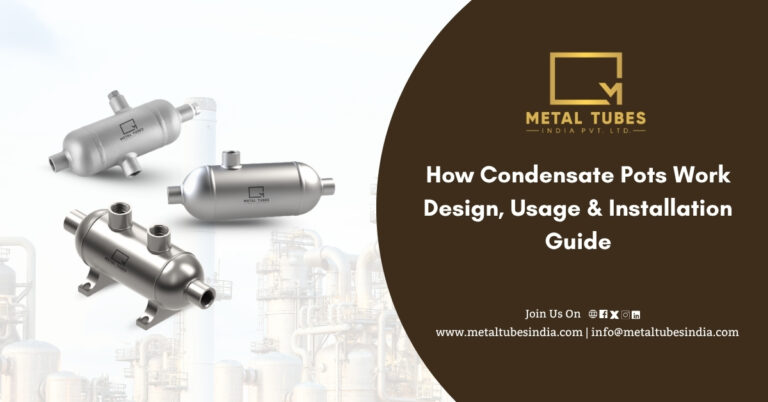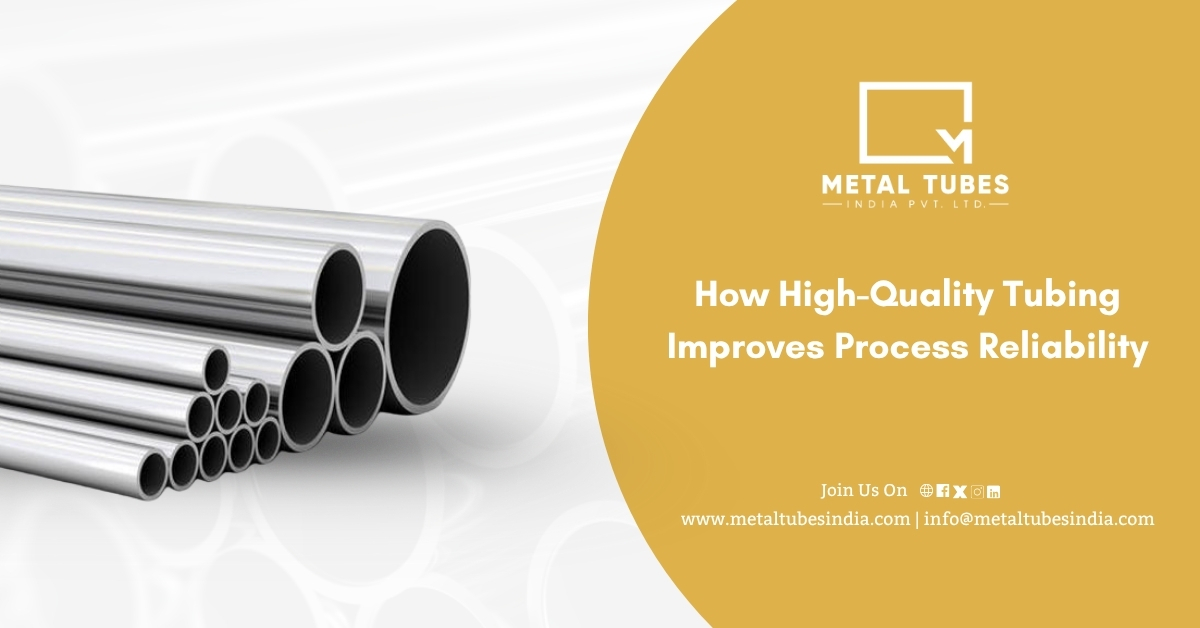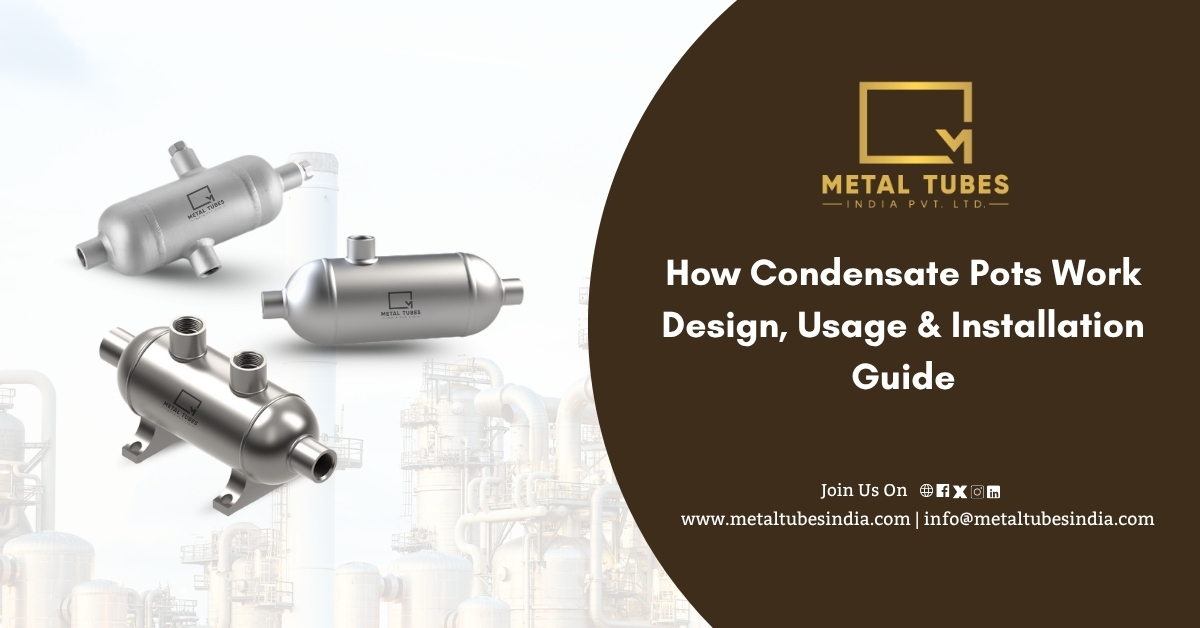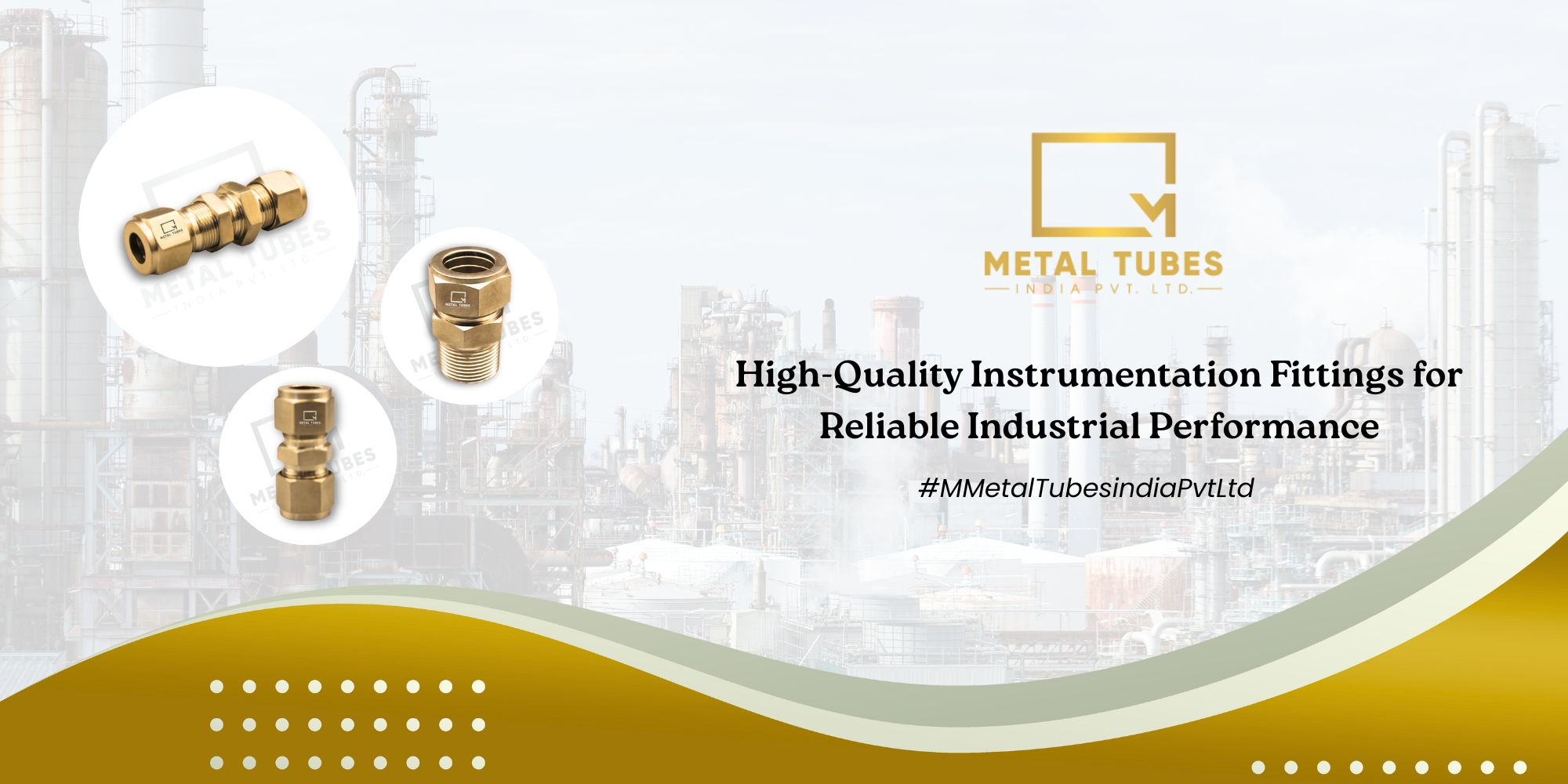How Condensate Pots Work | Design, Usage & Installation Guide

How Condensate Pots Work: Design, Usage, and Installation Tips
Condensate pots are an essential part of steam-based systems, especially when accurate differential pressure measurement is required. They help maintain a stable liquid seal, protect sensitive transmitters, and ensure smooth and reliable plant operations. Although simple in design, the role they play is extremely important in high-temperature and high-pressure applications.
What Exactly is a Condensate Pot?
A condensate pot is a chamber installed between the process line and the differential pressure instrumentation. As steam cools down, it naturally forms condensate. The pot collects this condensate and creates a liquid barrier, preventing hot steam from directly reaching the transmitter. This helps maintain accuracy and protects the instrument from thermal shock or sudden pressure changes.
How Condensate Pots Work
The working principle is straightforward:
- Steam enters the line and starts to cool down.
- Condensate is collected inside the pot.
- The pot maintains an equal liquid level on both sides of the transmitter.
- This stable liquid column ensures reliable readings.
Because the transmitter is shielded from high-temperature steam, its performance improves and its life increases significantly.
Design Features
Condensate pots come in different sizes, thicknesses, and materials—selected based on operating conditions. Most designs include:
- Cylindrical body
- Multiple ports
- Drain and vent options
- Vertical or horizontal mounting
- Welded or threaded connections
Materials commonly used include stainless steel, carbon steel, and alloy steels. SCH 40 and SCH 80 are preferred for handling pressure variations and temperature changes.
Where Are They Used?
Condensate pots have applications across multiple industries, including:
- Oil and Gas
- Power Plants
- Chemical Processing
- Petrochemical Units
- Pharmaceuticals
- Pulp and Paper
They are typically used in steam pipelines, flow measurement setups, and DP transmitters to ensure stable and accurate readings.
Installation Tips
Correct installation is important for achieving the desired performance. A few key points to follow:
- Install both pots at the same height to maintain equal condensate levels.
- Choose the right material for corrosion resistance and longer life.
- Support the pot properly to avoid vibration.
- Ensure vent and drain connections are easily accessible.
- Insulate in cold environments to prevent freezing or level imbalance.
Following these guidelines helps maintain measurement accuracy and reduces long-term maintenance.
Advantages of Using Condensate Pots
- Protection for transmitters from excessive heat
- Better stability and accuracy in readings
- Reduced calibration issues
- Lower maintenance downtime
- Long-lasting and reliable performance
- Smooth flow control
Why Choose M Metal Tubes India Pvt Ltd?
When it comes to condensate pots, quality and precision matter. M Metal Tubes India Pvt Ltd manufactures and supplies condensate pots designed for demanding industrial environments. Our products are built using high-grade materials, strict quality processes, and accurate fabrication standards.
We offer:
- Custom sizes and specifications
- Strong corrosion resistance
- Durable construction
- Clean fabrication
- Bulk supply capabilities
- On-time delivery
Along with condensate pots, we also supply a complete range of instrumentation fittings, valves, tubing, air headers, manifolds, and industrial accessories.
Call to Action
If you are looking for reliable condensate pots or other instrumentation products, we are here to support your requirements.
✅ Reach out to M Metal Tubes India Pvt Ltd for quotations, technical support, and bulk supply.
📩 Email: info@metaltubesindia.com
📞 Contact: +91 9323076453




